How do casino slots payout
New casino sites to play real money
Gamblers want to know slots’ RTP for obvious reasons. Knowing a machine’s payout percentage provides an indication on your long-term odds of winning.
- Jackpot pays exactly once every 1 million spins.
- 1,000-coin prize pays every 250,000 spins.
- 500-coin prize pays every 50,000 spins.
- 100-coin prize pays every 10,000 spins.
- 50-coin prize pays every 5,000 spins.
- 5-coin prize pays every 50 spins.
- 1-coin prize pays every 10 spins.
Inside the myth that casinos can change slots RTP at will

Return to player (RTP) is one of the most-important concepts to slots players. Payback determines how much the average player wins from a slot machine.
A slots game with 95% RTP, for example, would theoretically deliver $0.95 back for every $1 wagered. A slot machine with 88% payback would only offer $0.88 for each dollar wagered.
Gamblers want to know slots’ RTP for obvious reasons. Knowing a machine’s payout percentage provides an indication on your long-term odds of winning.
But one of the most-common fears is that casinos can simply change slots odds whenever they feel like it. Many gamblers are convinced that casinos alter RTP for a variety of reasons, whether it’s to lower payback during busy hours or simply earn more overall profits.
This fear seems valid when considering that players don’t see the inner workings of slot machines. But are casinos really able to alter payback on a whim?
I’m going to discuss this matter by looking at how casinos change RTP, common beliefs on the subject and casino limitations in controlling payback.
Slot machine RTP is determined by the pay table and how often each prize is programmed to hit.
The pay schedule shows how many credits each symbol combination delivers. The pay table only tells so much, though, and doesn’t show how often each payout is programmed hit.
A random number generator (RNG) ultimately determines which symbol combinations come up on each spin. Contrary to common opinion, the RNG does not determine payback.
Instead, this program merely cycles through different symbol combinations to determine the results of your spin. The RNG is more likely to include symbols that have a higher number of stops.
An RNG has no recollection of what happens on your previous spins. Instead, its main job is to come up with random results.
Again, icons with many stops will be chosen by the RNG more frequently than other symbols.
Casinos don’t need to worry about programming payout percentages — this is the game developer’s job. Instead, they simply consider what RTP they want to order for a given game.
Providers give land-based casinos a number of options to choose from when ordering payback.
- MGM grand wants to order aristocrat’s game of thrones.
- Aristocrat offers RTP choices of 88.0%, 90.0%, 92.0%, and 94.0%.
- MGM selects the version with 92.0% payback.
Online slots developers usually offer a uniform RTP for any game that they produce. Internet casinos that license their slots are then forced to use the provider’s chosen payout percentage.
But a minority of online slots providers do let casinos choose from preset RTP amounts (covered later).
How casinos change payout percentages depends upon the style of game. Payback for most land-based slot machines is determined by the EPROM chip located inside.
A gambling establishment can alter a machine’s RTP as long as they have the EPROM chip, which is sometimes the case. Theoretically, any casino that has these chips can change payback whenever they like.
The catch, though, is that many gambling jurisdictions require the casinos to report when they alter a game’s RTP. This process requires that a casino manager spends time filling out paperwork.
Some slot machines operate on downloadable software, which comes from a central server. In these cases, the casino doesn’t have to open a game and change a chip.
Instead, they can simply download the software to alter RTP. But just as with replacing an EPROM chip, casinos need to follow their jurisdiction’s guidelines when changing server-based payout percentages.
For starters, gambling venues can’t make these changes when somebody is playing a machine. Furthermore, they have to wait a certain amount of time before altering any game settings.
Some slots players believe that casino owners and management can change RTP across the board by simply flipping a switch. This theory has been furthered propelled bythe rise of video slots.
Very few land-based slot machines operate on mechanical reels and levers these days. Instead, casinos mainly feature video slots that run through software programs.
Of course, gamblers’ fears are only magnified when dealing with online casinos. These websites are headquartered far away from most players, leading to concerns that internet casinos can do anything they want to slots payback without anybody knowing.
But what else beyond suspected greed leads players to believe that casinos will cheat them through lower RTP?
A driving force behind conspiracy theories is how slot machines are the streakiest casino game. Most slots only see players win around 20-40% of their spins, even with every payline activated.
Such low hit frequency leads gamblers to experience long losing streaks. In turn, these cold streaks cause players to theorize that casinos have changed RTP.
Contrary to what some players believe, casinos don’t simply alter payout percentages whenever they feel like winning more money. Instead, gambling venues must go through the proper channels.
Earlier I covered how many jurisdictions require casinos to submit paperwork before changing the EPROM chip inside a slot machine.
Not only does an important employee waste time filling out paperwork and sending it to the local gambling control commission, but the casino must also pay for another EPROM chip. These chips are expensive, meaning it’s not economically viable to continue changing RTP.
Of course, server-based slot machines can be altered faster without opening machines. But there are deterrents from doing this as well.
Some las vegas slot machines are so popular that they have people standing off to the side waiting to play. Therefore, casinos can’t change RTP for these games until things slow down in the middle of the night.
More importantly, gambling establishments don’t like tying up games and preventing people from playing. This creates another situation where it doesn’t make economic sense to put games down for maintenance just to constantly change payback.
Casino employees’ time is valuable, especially with regard to managers. It would be a waste of resources and manpower to alter RTP from machine to machine.
Of course, none of this subsides fears that online casinos can change payout percentages as they please. But gaming sites face roadblocks in this regard too.
In fewer cases, online casinos can choose from different RTP options just like land-based establishments. Realtime gaming (RTG) commonly does this by offering their clients payout percentages ranging from 91.0% to 97.5%.
Casinos must decide on the chosen payback when ordering a certain game. They can’t, however, ask RTG to change payout percentages back and forth every day.
RTG allows gaming sites to choose from different payout percentages due to the various bonuses offered through their software setup. RTG offers total casino packages where they handle the bonuses, games, and more. Clients have some flexibility here and can either choose high bonuses with low slots RTP or vice versa.
In any case, you can see that there’s nothing nefarious going on with the average online casino and game provider. This is especially true when considering that many slots developers and casinos undergo third-party auditing to ensure that their games offer fair and random results.
Earlier I mentioned how some players believe that casinos can merely flip a switch to change all of their slot machines’ RTP.
I dismiss this idea, because casinos need to go through the proper channels to change payback. But is there any shred of truth to the switch-flipping concept?
A 2006 new york times piece offers evidence that it’s possible for casinos to quickly change RTP for many different games.
This article revolves around a treasure island casino executive named justin beltram, who discusses how his casino was undergoing a technology experiment at the time.
The piece reads that “with a few clicks of his mouse” beltram can reprogram the “denominations required to play, payback percentages, even game themes” for all of treasure island’s 1,790 slot machines.
Much of the article deals with how easy it is to change settings in server-based slots versus the EPROM-chip games. Beltram notes that he could change a game’s settings within “20 seconds” using this technology, compared to the lengthy and complicated process of opening machines to alter settings.
The executive also squashed the notion that his casino would abuse this power to win more money from players. Beltram insists that such practices would be bad for business and possibly lead to trouble with gaming regulators.
David G. Schwartz, director for UNLV’s center for gaming research, did express concerns about casinos changing payback through servers. “let’s say you’re playing at 2 and you’re doing great and you come back at 6 and the pay tables have changed,” explains schwartz.
While this is a valid concern, lowering odds and causing players to lose more is counterproductive to business. Nobody wants to play at a casino where they think that the odds are stacked against them.
Overall, the article suggests that while it’s possible for casinos to quickly change slots payback with server technology, this concept is more about meeting customer demands than anything.
Long story short, casino managers don’t have time to sit in their back office and switch RTP every time that they see somebody winning. Casinos already have the edge over players, and it’s not worth the time or repercussions to con gamblers.
The thought that casinos instantaneously change all of their slots payback is only one misbelief regarding the subject. Here are a few more myths surrounding how casinos handle slots RTP.
Slots payback happens on a cycle
Some gamblers are convinced that slots payout percentages happen on a cycle. This idea stems from the belief that slot machines are programmed to offer payouts at specific intervals.
Here’s an example of how one might conceptualize this:
- Jackpot pays exactly once every 1 million spins.
- 1,000-coin prize pays every 250,000 spins.
- 500-coin prize pays every 50,000 spins.
- 100-coin prize pays every 10,000 spins.
- 50-coin prize pays every 5,000 spins.
- 5-coin prize pays every 50 spins.
- 1-coin prize pays every 10 spins.
Players who believe that slot machines work like this often think that they can win a jackpot by playing at the right point. They look for a jackpot that hasn’t been won in a while and start playing in hopes that the game is nearing the end of its payout cycle.
But slots results are determined by an RNG, which has no recollection of previous payouts and merely continues generating random results.
Jackpots and other payouts are programmed with specific odds. Certain jackpots may very well be programmed to pay every 1 million spins on average.
But the key is that this prize doesn’t have to pay out after exactly 1 million rounds. Instead, the jackpot can hit at 500k spins or 2 million spins.
Casinos change RTP during the day and night
Another common slots myth is that casinos alter payout percentages throughout the day. This theory is based on the logic that slot machines are more generous during the less-busy day hours and tighter during the busier evening hours.
It makes sense to believe that casinos would tighten payback when they have more slots customers. Doing so would enable them to earn far more profits.
If a slot has a 5% house edge, this means that casinos are winning a nickel for every dollar wagered by players. Assuming a gambler bets $600 per hour, the casino is making $30 on average (600 x 0.05).
The last thing a gambling establishment wants to do is lower payback and discourage people from playing during busy hours.
Many gamblers already become suspicious that payback has changed when they go through cold streaks. Casinos don’t want to add fuel to this fire by actually altering RTP just to increase an advantage that they already have.
Native american casinos can do whatever they want
I’ve covered the limitations facing gaming sites and commercial land-based casinos when altering slots payout percentages. But what about native american casinos?
Some slots players believe that US tribal casinos can do whatever they want, because they’re located on sovereign ground. The reality, though, is that native american casinos don’t have as much free rein as people think.
These casinos must comply with gambling regulations set forth by the tribe’s gambling commission. These standards are defined by negotiations between tribes and the state where they’re located.
Once the state and tribe come to an agreement, the pact must be approved by the US department of the interior.
Contrary to some players’ opinions, native american gambling venues don’t make rules as they go and change slots payback whenever. Instead, they too have regulations that are discussed and approved by multiple parties.
Many gamblers picture casinos fiendishly lowering slots RTP to maximize their profits. But these theories are the result of misunderstandings about how the gambling industry works.
Most land-based and online casinos operate in jurisdictions that impose restrictions on alerting payout percentages. Some jurisdictions go as far as to require paperwork every time that casinos want to change RTP.
In other cases, gambling venues can quickly change payback through server technology. Even this comes with restrictions, though, including a machine being down while the casino changes payback.
You can generally assume that most land-based slot machines offer anywhere from 88% to 95% RTP. Penny and nickel slots comprise the lower end, while quarter denominations and above constitute the higher end.
Online slots usually deliver between 95% and 97% payback. You can google individual slots or game providers to research online payout percentages.
You have little reason to fear casinos lowering RTP to a ridiculously small percentage. They have too much at stake if they’re caught, and gambling jurisdictions have rules against doing so.
MAXIMIZING SLOT PAYOUTS
Slot machines are not games of strategy. Live casinos and online casinos offer them as games of pure chance.
Only rarely does skill come into play, although skill-based slots loom as a coming attraction.On most slot games, there’s nothing you can do to change the outcome. So how do you go about maximizing slots payouts, preferably while minimizing losses?
In this chapter, we’ll focus on three ways that can maximize return:
- Betting maximum coins
- Scouting progressives
- Playing machines with banked bonuses
Maximizing returns does not mean making a long-term profit on the slots. The house edge is not as flexible as in games with strong skill elements such as blackjack or video poker. These strategies are more a matter of giving yourself a chance at some nice wins, while recognizing that in games of chance with a house edge, losing sessions are part of the game.

SHOULD YOU BET MAXIMUM COINS?
Live casinos long encouraged players to bet maximum coins on slot machines, and players have long wondered if that was really to their advantage.
The answer depends on what kind of machine you’re playing.
- On most live slots with three-mechanical reels, you get a higher payback percentage by betting max coins.
- On most video slots, including live slots and video slots, covering all the paylines with a minimum bet per line yields the same percentage as betting the max.
Let’s look at the situations separately, with three-reel mechanical games first.

BETTING THE MAX ON THREE-REEL MECHANICAL SLOTS
On most three-reel slots with mechanical reels, you do get a higher payback percentage if you bet the max. But it might not be worthwhile to bet extra to get that higher percentage. To see why, let’s first look at the basic types of mechanical-reel slot machines.
MULTIPLIERS
On a multiplier game, each win is proportional to the number of coins or credits wagered.
Here’s a sample of a multiplier pay table:
Payoffs are proportional to wager size, so betting three coins brings payoffs exactly triple payoffs for betting one coin.
With that format, the payback percentage is the same no matter how many coins you bet. There is no incentive to bet the max built into the pay table pure multipliers are rare in casinos on slots with three mechanical reels, though many video slots and five-reel mechanicals are pure multipliers in the non-bonus, reel- spinning portion of the game.
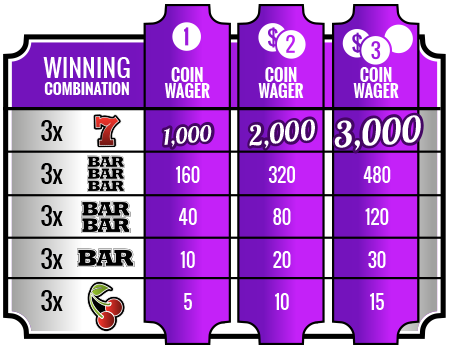

MULTIPLIERS, WITH DISPROPORTIONATE JACKPOT
Most three-reel mechanical slots give you an incentive to bet maximum coins by including a big jump in the top jackpot.
Like the pure multiplier, this game has proportionate payoffs through most of the pay table.
However, there is a disproportionate jump in the top jackpot when you bet three coins. Three 7s pay five times as much when you bet three coins as when you bet one.
That has the effect of giving the game a higher payback percentage when you bet max coins.
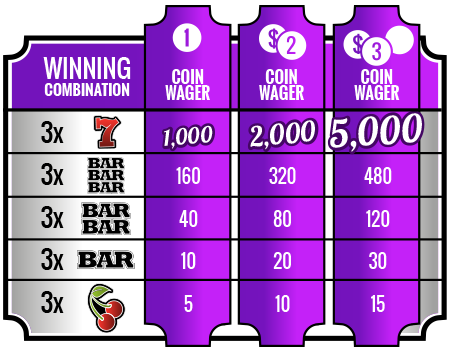
Three-reel progressives are this type of game, amped up with a growing jackpot. You have to bet the max to be eligible for the jackpot.
To see how the effect this has on payback percentages, let’s imagine the above pay table on a $1 game that returns 95 percent when you bet the max and in which the odds lead to the top jackpot hitting about once per 20,000 plays.

If you bet the max, then per 20,000 plays, you’re betting $60,000.
A 95-percent payback means that on average, you’re getting $57,000 back.
Of the $57,000 in returns, you get $5,000 from the jackpot and $52,000 from the smaller pays.
If you bet only one coin, then per 20,000 plays, you’re betting $20,000. The smaller pays are proportionate, so you get one-third of $52,000, or $17,333. The one-coin bet brings a jackpot of only $1,000 on your one 7-7-7 hit. That brings your total payback to $18,333.
To calculate payback percentage, divide your $18,333 in returns by $20,000 in wagers, then multiply by 100 to convert to percent.
That shows a payback percentage of 91.7 percent.
Bottom line: if you bet the max, this machine returns 95 percent. If you don’t, it returns 91.7 percent.
Betting the max doesn’t make the jackpot come up any more or less often than if you bet fewer coins.
However, the normal odds of the game, coupled with the disproportionate pay table, make the payback percentage higher if you bet maximum coins.

HIGHER PERCENTAGE VS. GREATER RISK
On multipliers with disproportionate jackpots, you get a higher payback percentage if you bet max coins.
Does that mean you should always bet the max? Let’s do a little arithmetic.
- The machine detailed under multipliers with modified jackpots returns 91.7 percent to players who bet one coin.
- Per 1,000 plays, one-coin wagers bring a 917-coin return. The house keeps 83 coins.
- If you bet three coins per play, the payback percentage increases to 95 percent.
- Per 1,000 three-coin bets, you get back 2,850 coins. The house keeps 150.
Even though you’re getting a higher payback percentage, your average losses are higher because you’re risking a lot more money.
Just how big the difference in percentages and average losses differ from game to game, but you need to weigh the larger risk when weighing whether to bet more to get a higher payback percentage.

BUY-A-PAYS
On buy-a-pay slot, each coin wagered unlocks a portion of a game’s potential pays. On some, it’s as simple as three pay lines across the reels, so that you win only on combinations across the center reel if you bet one coin, also win on the top line if you bet two, and add bottom line wins lines if you bet three coins.
Since the winning combination is on the third line, you would get the three 7s winner only if you bet maximum coins.
Other buy-a-pays unlock paying symbols with each coin wagered.
- The first coin wagered unlocks the fruit symbols, the second coin unlocks the bars and the third coin unlocks the 7s
- If you line up three bars but have wagered only one coin, you do not win. Likewise, if you line up three 7s and have bet only one or two coins, you get back nothing.
- Do not play a buy-a-pay if you are not willing to wager enough to unlock all the symbols.
The last thing you want is to see the three jackpot symbols line up when you haven’t bet enough to unlock them.
I’ve seen it happen. A woman playing across the aisle from me saw the jackpot symbols line up. She started screaming and her friends surrounded her, offering hugs and congratulations.
And then … nothing. No lights, no music, no money. It was just a losing spin.
You don’t want to be that player. On a buy-a-pay, you either bet the max or don’t play.

THE BOTTOM LINE FOR MECHANICAL-REEL GAMES
- The number of coins you wager makes no difference to the payback percentage if the game you’re playing is a pure multiplier.
- However, if you can’t bet max coins on a buy-a-pay or most progressive games with mechanical reels, you should find a different game.

SHOULD YOU BET THE MAX ON VIDEO SLOTS?
The situation is different on five-reel video slots. Paybacks are proportional to coins wagered per payline on these games, with no jackpot jump for betting the max.
Here’s a sample pay table for a 20-payline, five-reel video game:
There are a few notable things about that pay table:
In order to give easy examples and streamline the math, this game is simplified from the pay tables you actually see in casinos. Casino games often use more character symbols and also often use generic symbols such as A-K-Q-J-10. Many video slots also include more than one bonus event. Despite the simplification, there are many more possible winning combinations than on the three-reel slot. Even two in a row of the top-paying symbol brings some payoff.
As set up, this game with 20 paylines and a five-coin maximum bet per line would have a maximum total bet of 100 coins.
Games you’ll find in casinos often have much higher maximum bets, such as 20 coins per line on a 20-line game, or 10 coins per line on a 40-line game, for a total of 400 coins. The pay table is proportional from to bottom, so betting maximum coins does not increase payback percentage. That is typical on video slots.

BE ELIGIBLE TO WIN
On the video slot game illustrated above, there is no pay table incentive to wager maximum coins per line. However, it might be to your advantage to make sure you bet on every payline. Why? Because on some machines, the bonus symbols must land on an active payline for you to be eligible for the free spins, wheel spin, pick-a- symbol round or whatever other special event has been designed into the game.
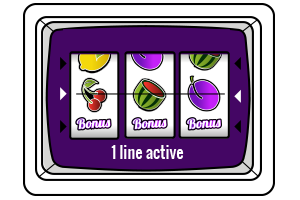
- You decide to bet a single coin. That activates only the center payline.
- You go to the bonus event if three bonus symbols land on the center line, since that line is active.
- However, if the reels land on any line you have not activated, you do not go to the bonus.
Time spent in bonus events is time you spend building credits without making extra wagers, so you want to maximize your chances of going to the bonuses. To maximize slot machines payouts, make sure you’re eligible for the bonuses offered. Some newer games avoid the issue by eliminating the option to play fewer paylines than available. A 40-line game might have buttons labeled “bet 40,” “bet 80,” “bet 120,” “bet 160,” and “bet 200,” giving you options to bet one, two, three, four or five credits per line, but no chance to play only one line.
In the slot industry, these are called “forced bet” machines.

- On mechanical-reel slots that don’t have pure multiplier pay tables, you get the highest payback percentage by betting maximum coins.
- A disproportionate leap in the top jackpot is the most common incentive for betting the max on three-reel games.
- Getting the highest payback percentage for betting the max doesn’t mean average losses are lower because bigger bets bring more risk.
- On most video slots, betting the max does not increase payback percentage.
- Covering all paylines, even with minimum coins per line, is important on video slots, especially if bonuses require symbols to land on an active payline.
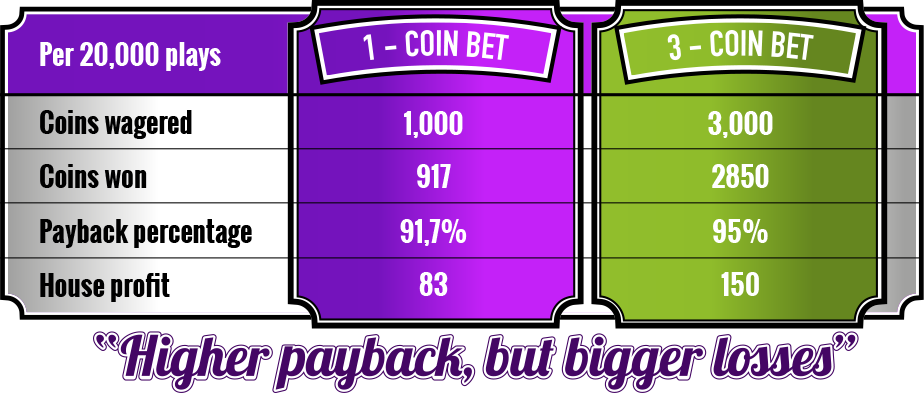
SCOUTING PROGRESSIVES
Betting maximum coins on three-reel slots and making sure to cover all the paylines on video slots are methods for insuring maximum payback percentage, but they can’t overcome the house edge entirely.
Odds of the games are set so the house will make money, no matter what your bet size, and regardless of whether you are playing in a live casino or online casino. It’s only natural that some players would try to turn that edge around.
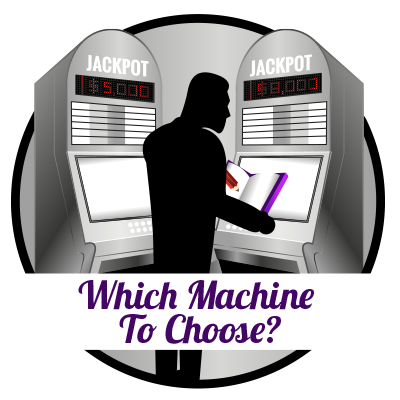
One method is by scouting progressives, which can be broken into two major areas:
- Scouting top jackpots, especially on three-reel games, to find those that are larger than usual.
- Scouting “must hit by” slots, which advertise that jackpots must hit by a certain amount. These are not fool-proof methods, for several reasons.
- Scouting is a time-consuming business, especially live slots.
- Players don’t have the necessary information to know if a jackpot is big enough to give players an edge.
- On most games, results remain random and you are no more likely to win than if the jackpot is small.
- When you play linked progressives, there’s always the possibility that another player on a linked machine will win the jackpot you scouted.
However, if you play progressives only when the jackpot is high, your payback percentage rises.
You may not be able to overcome the house edge, but skipping low jackpot times means you’re always playing for a higher than average pay table.
Let’s look at how all this works.

SCOUTING TOP JACKPOTS
Progressive slots start each jackpot with a base amount, and the jackpots build with each bet thereafter.
For example, after a player wins a jackpot, you might see a pay table like this:
A player who scouts progressives will not play when the jackpot is at that minimum level.
Instead, the jackpot hunter does some scouting and charting in an attempt to determine an average payoff when the jackpot hits. The jackpot hunter keeps a record, whether in a computer file, a diary or on scraps of paper.
A diary entry might look like this.
You can’t count on being at the casino every time a jackpot hits. So the entries in the jackpot column carry several provisos:
- The player who is serious about scouting must make frequent visits to check jackpot levels.
- If a jackpot has hit since the last visit, the serious scout asks a slot attendant or supervisor if they know the payoff size.
- Some casinos put photos of recent winners and their jackpot amounts on a wall.
- Sometimes, the jackpot entry will have to be an estimate based on the last previous known level.
- More data collected over a longer time is better.
In this case, the jackpot scout would regard the low jackpot of $5,981 as an outlier.
He’d see that all other jackpots were at least $7,888, with most over $8,000.
Therefore, he wouldn’t start playing until the jackpot reached at least $8,000.
That doesn’t guarantee profit, but does mean he’s playing games with a higher payback percentage than if he played when the jackpot was $5,000.

JACKPOT EFFECT ON PAYBACK PERCENTAGE
Players have no way of knowing a game’s targeted payback percentage, nor is there any way to know how much the top jackpot contributes to the overall return.
However, we can make up a realistic example to see how this work. Our hypothetical game is a $1 machine that returns 92 percent when the jackpot is at the base value of $5,000. Non-progressive dollar slots typically pay a little more than that in the U.S., but progressives start at lower returns while the building jackpot also increases the percentage.
Of that 92 percent return, let’s say 87 percent comes from smaller wins, and 5 percent from the jackpot.
So per $100,000 wagered, you would get back $87,000 in smaller pays and $5,000 from the jackpot, for a $92,000 total.
But if the jackpot hunter doesn’t play until the big payoff is $8,000, he’s paying a game with a different payback structure.
In that case, per $100,000 wagered, he’d get back $87,000 in smaller pays and $8,000 from the jackpot, for a total of $95,000.
That makes the payback percentage 95 percent. Buy delaying play until other players have built the jackpot, he’s playing a machine with a higher payback percentage.
We can do this for our hypothetical machine at different jackpot levels:
PAYBACKS FOR HYPOTHETICAL PROGRESSIVE
On this machine, the payback percentage rises 1 percent for each $1,000 added to the jackpot. It reaches a break-even point where there is 100 percent payback, or no house edge, at a $13,000 jackpot. That $13,000 jackpot is higher than the largest payoff in our jackpot scout’s diary, meaning he’d never be playing a game with 100 percent return and a profit opportunity. This hypothetical was set up to yield easy arithmetic. Real-world examples would be more complex, but the message here is realistic:
- You do play for higher payback percentages if you reserve your play for times when the jackpot is high.
- Even at seemingly high jackpot levels, that payback percentage rarely reaches 100 percent.
There’s one more factor to consider: higher jackpot levels don’t make the jackpot occur more often. If the odds of the game are set so the top jackpot will hit once per 20,000 plays, the odds of it hitting ALWAYS are 1 in 20,000. It doesn’t matter if the jackpot is $5,000, or $15,000, something higher or something in between. The odds are the same on every play.
It doesn’t matter if someone hit the jackpot on the last play, or if it’s been 100,000 plays since the last jackpot. If the odds were 1 in 20,000 on the first play, they’re still 1 in 20,000 on the next one. And to underscore a point made earlier, the casino doesn’t post a machine’s payback percentage. On any specific game, we don’t know the odds that go into determining how often a jackpot hits.
Bottom line: if you want to use jackpot scouting as a way to play for higher payback percentages, great.

SCOUTING “MUST WIN BY” GAMES
Some slot machines, especially on video slots, tell you its jackpot must be awarded by a certain level. Take the WMS gaming slot mystical fortunes as an example. The top box features game title graphics plus two progressive jackpots, labeled “minor” and “major.” under the word “minor,” you’ll see a jackpot amount in big yellow numerals, and underneath is the message, “must award by $50.00” under “major” and its jackpot amount, the message reads “must award by $500.”
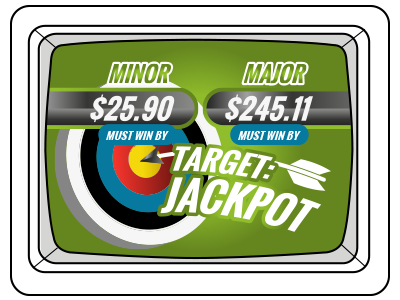
These are mystery jackpots, of the type detailed in chapter 6.2: minimum bettors can play for maximum jackpots. The jackpots are separate from the main game. You still spin the video reels, collect on winning combinations and launch bonus events. If you want your scouting to give you an edge over the casino, that’s not likely at all.
You collect a jackpot when your wager pushes the total to an amount selected by a random number generator. Let’s say the base jackpot on a hypothetical game is $200 and must be awarded by $500. The RNG selects an amount between those two values. If the percentage of your bet that’s added to the jackpot pushes it to that total, you win. The payoff isn’t driven by symbols, and the outcome of your spin doesn’t matter. The machine will just tell you you’ve won the jackpot.
All amounts have an equal chance of being selected by the random number generator. However, the closer the jackpot is to the “must win by” amount, the better your chance of winning on the next play. The reason is that the possibilities narrow as possible jackpot amounts are left behind. The possibilities are in 1-cent increments so between $200 and $201 there are 100 possibilities -- $200.01, $200.02 and so on. With a $300 difference between the base and the maximum, that means the RNG has 30,000 possible jackpot totals to choose from.
If your bet increases the jackpot to $200.01, there is a 1 in 30,000 chance that is the jackpot amount. However, if your bet increases the pot to $201.01, then 100 amounts already have been eliminated, and the chance of your bet triggering the jackpot improves to 1 in 29,000.
Let’s take a sample of possible jackpots and your chances of winning if your bet pushes it to that level:
The closer the total is to “must win by” amount, the better your chances of winning the jackpot. About half the jackpots will hit for less than $350, and about half will hit for more than $350. However, there are so many possible jackpot totals that you almost always are a sizable underdog. Keep that in mind if you decide to scout the “must win by” slots.

- Waiting to play progressives until jackpots are at higher levels will yield a higher payback percentage.
- However, playing for bigger jackpots is not necessarily a profit opportunity. In most cases, the house still has an edge.
- On “must win by” progressives, you are more likely to win if you wait until the jackpot is closer to the designated maximum
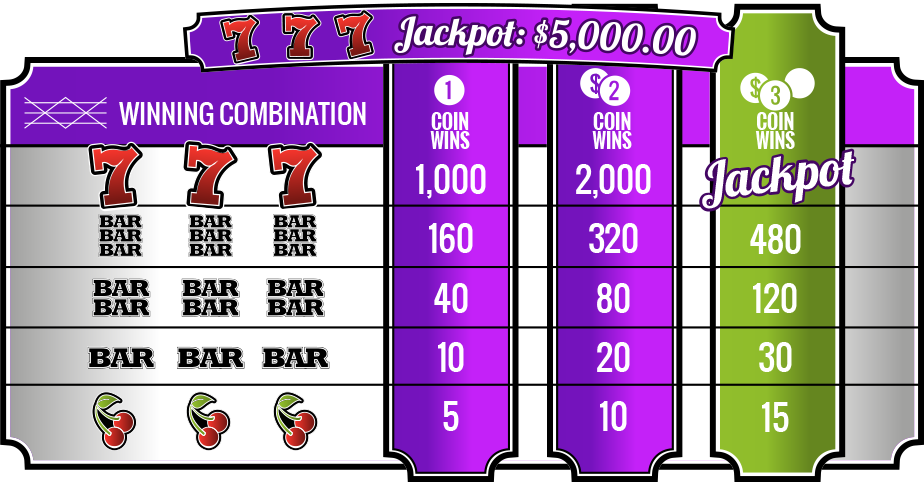
BANKED BONUSES
Slots in which it’s possible to get an edge on the house are very rare, but you should never say “never.”
the reason you can’t say “never” on the slots are games with banked bonuses, though they are rare today.
Banked bonus games give players a target to shoot for, with two main types:
- Credit awards that build until a player wins.
- Games with objects to collect to trigger a bonus award.
The key to profit opportunity is that partially completed bonuses remain in play for the next player. If each player starts anew in building toward a bonus, you can’t get an edge. These games were hot commodities in live casinos in the late 1990s and early 2000s, but have largely faded from the scene. They are occasionally found in live casinos that have older equipment on their floors. Games that build toward bonuses can be found in online slots, but there is no carryover from one player to the next. Banked bonus games are included here mainly as an example of profit opportunities on the slots and how to recognize them.

BUILDING AWARDS
The prototype banked bonus with building awards game was piggy bankin’, a 1996 slot from WMS gaming. The base game was a three-reel mechanical slot, but the top box had a dotmation screen.
On the dotmation screen, orange dots on a black screen formed an image of a piggy bank, with a credit amount on its side. The starting value in the bank was 10 coins. Each time three blank spaces landed on the payline of the main game, a coin was added to the bank. When the break the bank symbol landed on the payline, a dotmation hammer smashed the bank, and animated coins came flying out. The player collected the number of coins in the bank.
Sharp players soon figured out that if they waited until enough coins were in the bank, they could have an edge on the game. A published report by mathematician and gambling expert stanford wong suggested the break-even point was 15 coins. Players hunting for an edge would play piggy bankin’ only when there were 15 or more coins in the bank. They would play until they broke the bank, and then leave the machine. Profits were never large using that method. It was a matter of padding your bankroll by a few dollars, then moving on. Should you see a game with a credit-building banked bonus today, that’s how to approach the game.
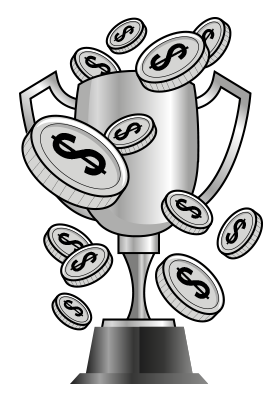
Look for the machine with the most coins to be awarded, and play only until you win that award.

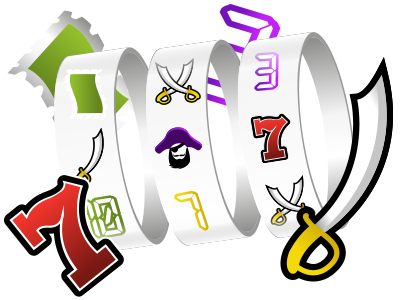
COLLECTING OBJECTS
In the peak time of banked bonuses, games of collecting objects outnumbered building-credits games. Today, if you see a banked bonus game, it’s likely to be a banked bonus game – S&H green stamps seems particularly long-lasting, even though it was introduced in 2004. These collection games were born with silicon gaming, one of the first companies devoted entirely to video slots. Silicon gaming’s signature odyssey slots, released in 1997, featured an elongated, high-definition video screen with icons to choose from among multiple games. Odyssey slots were the first with hard drives and had high-quality animation. The games were more like traditional three-reel slot games than the pick’em bonusing games from other manufacturers. However, banked bonuses were a feature starting with the initial odyssey release, which included a game called fort knox.
In addition to three video reels, fort knox included a 10-digit code. During play on the reels, you could collect code digits. There was no skill in collecting the digits, nor were there choices to make. You’d just collect digits at random times. With each digit collected you would be one step closer to cracking the code. When you had all 10 digits, the screen would change to animation of the door to the vault at fort knox. The door would swing open to reveal all the gold, and a credit amount for your bonus payoff.
Before long, players learned to scout for machines where the code had been partially solved by other players. If a game was available with five or more digits already solved, players had an edge. At that point, those playing for profit would play the game until they opened the vault, then leave and let someone else solve the early digits. Silicon gaming produced a number of such banked bonus games. Another was called buccaneer gold. In the pirate-themed buccaneer gold, instead of collecting code digits, you collected daggers. Each time a dagger appeared on the reels, a dagger would be stuck into a pirate ship’s rail. When you collected five daggers, you won a bonus award. This time, the magic number was three. If you found a machine with three daggers already in the rail, you had a profit-making opportunity.
Other gamemakers also produced banked bonus collecting games. International game technology went that route with its vision series, which put a bonus screen in the top box of mechanical-reel slots. One vision series game was called racing 7s. Three 7s – one red, one white and one blue – were on a track divided into segments. Each 7 had a credit amount associated with winning the race. In the highest-paying version, the red 7 could win 100 credits, the blue could win 25 and the white could win 10. Each time a 7 landed on the payline of the main game, the 7 of the same color would move up one notch on the track. When your spin took a 7 to the finish line, you won the prize for the 7 of the indicted color. The trick was to look for machines with 7s within two notches of the finish. If you could find a higher-paying red 7 near the finish, so much the better.
Bally technologies had S&H green stamps, which still occasionally is spotted in casinos. The object is to fill a book with the trademarked green stamps. It takes 1,200 stamps to fill a book. When stamp symbols appear on your video reel spins, stamps are transferred to the book. Some symbols put one stamp in the book, some two, and on up to 50-stamp symbols. In the onscreen book, you see spaces for 12 stamps. Each represents 100 stamps collected. That’s an easy visual shortcut, but the actual number of stamps also is displayed on the screen. If you spot four stamps in the book, you know immediately at least 400 stamps are collected. Then if you look for the number you might find the actual total is anywhere from 400 to 499. If you spot a game with at least 600 stamps already collected, you have an edge. That’s when to start playing. When you fill the book by reaching 1,200 stamps, you’re given the option of taking free spins or starting another book. Always take the free spins. Leave the early stages of filling a book to someone else.
BOTTOM LINE
you’re rarely going to encounter banked bonus collecting games today. When you do, choose machines where other players have taken you at least halfway toward completing the collection.
Are casinos able to change slot payouts?
Casinos are not able to change slot payouts, slot machines come with an already set payout percentage, when a casino places an order for a slot it specifies the long-term payout percentage it wants. Although, depending on the jurisdiction the casino may or may not be able to change the payback percentages at a later stage.
For example, in nevada, casinos are able to change the slot payout percentages by ordering a new chip from the manufacturer, the chips in the slot machines are then swapped and it is only allowed when all the appropriate paperwork is filled with the state to inform them of the change. Some of the later model slot machines support downloadable software, should a casino request a change in payout percentages the software can be sent via a central server and the slot machine can be updated without physically being opened. Yet there are strict rules in place regarding software changes and the casino is unable to make these changes on any slot while anyone is playing on it.
What is the immediate payback percentage on slots?
What can casinos change via the configuration menu?
What are the typical payout percentages on slots?
When it comes to slots the house edge or advantage is replaced by the payback percentage, these vary from one software supplier to the next and from one slot to the other. Some of the most popular online slots offer a payback percentage of 99%, which is much higher than that offered by land-based slot machines, which offer around 79% to 85% on average. It is most important to remember the theoretical payout percentage are calculated over an extended time-period.

Doug holmes author
Doug is a passionate slot fan and an expert in the gaming industry and has written extensively about online slot games and various other related information pertaining to online slots. In his spare time, he enjoys time with friends and family, reading, travelling, and of course, playing the slots.
Do slot machines on the vegas strip pay well?
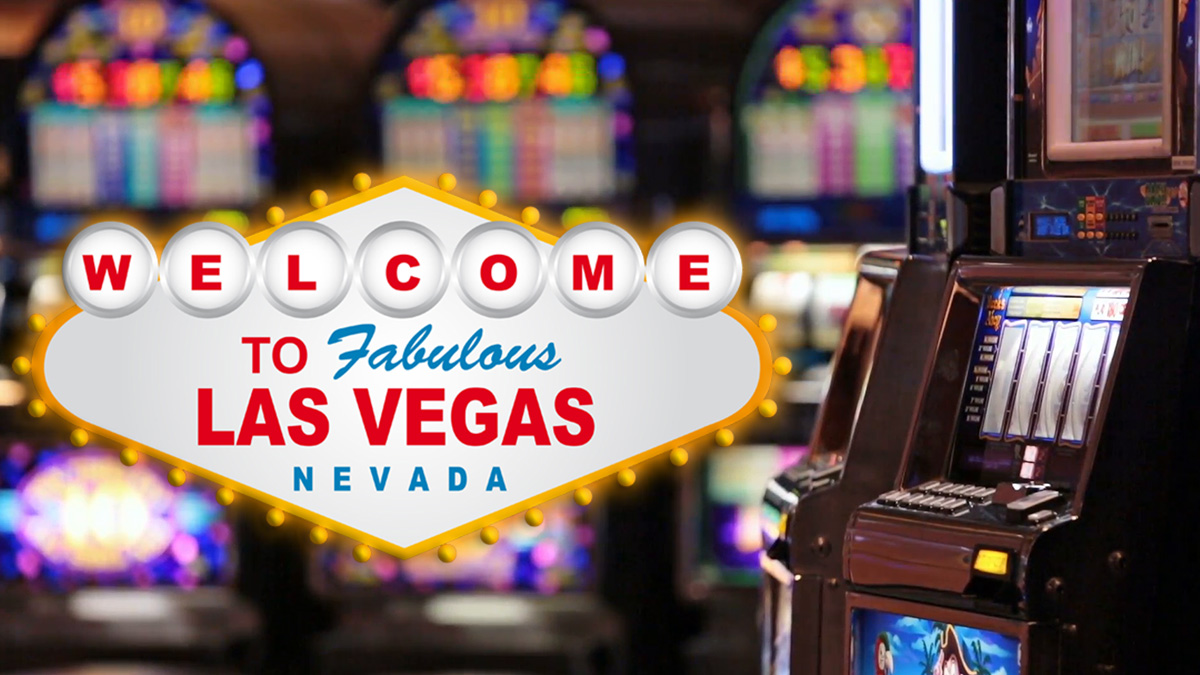
The las vegas strip is no doubt one of the most-popular places to play slot machines. Millions of tourists hit las vegas boulevard every year to spin the reels.
Most of these gamblers aren’t too concerned about their exact chances of winning. They just want to enjoy fun games and get a few thrills.
Of course, your bankroll stands to last longer when you do choose slots with fair pay. Therefore, you might be interested to know how vegas strip slot machines stack up to the competition.
Whether you’re going to sin city anytime soon, or just thinking about it in the distant future, you’ll want to know the following info on vegas strip slots payback.
A look at vegas strip slots return to player (RTP)
The nevada gaming commission (NGC) regularly offers revenue reports on their casino gambling industry. These resources cover gaming wins for the past 12 months, including wins for slot machines.
You can get a composite view on how well nevada slots pay and their house edges by looking at these reports. You’ll also be able to see a breakdown on prominent jurisdictions within the silver state.
The NGC’s report breaks down how much the strip’s slot machines pay based on coin denomination.
Here’s how much the most-popular coin denominations delivered in 2018:
- Penny slots – 88.30% RTP (11.7% house edge)
- Nickel slots – 91.63% RTP (8.37% house edge)
- Quarter slots – 89.40% RTP (10.60% house edge)
- Dollar slots – 92.30% RTP (7.70% house edge)
- Multi denomination – 93.61% RTP (6.39% house edge)
You can see that penny slot machines are at the bottom in terms of payback. They only offered 88.3% RTP, making them one of the worst choices of all casino games in terms of winning.
The multi-denomination machines featured the best rate at 93.61% RTP. You might want to stick with these games on the strip, given that they both let you change the coin size and offer the best payback.
How do vegas strip slots compare to the rest of nevada?
Knowing how much vegas strip slot machines pay is a great start. However, a reference point is needed to measure if the strip’s slots do or don’t pay well.

Here’s how well slots paid throughout the silver state in 2018:
- Penny slots – 90.0% RTP (10.0% house edge)
- Nickel slots – 94.39% RTP (5.61% house edge)
- Quarter slots – 92.83% RTP (7.17% house edge)
- Dollar slots – 93.61% RTP (6.39% house edge)
- Multi denomination – 94.74% RTP (5.26% house edge)
Comparing the numbers, the vegas strip definitely doesn’t pay slots players like nevada as a whole. All of their coin denominations offer at least 1% lower RTP than the entire state.
The biggest difference can be seen in the quarter slots. The strip only delivered 89.40% in 2018, while nevada paid 92.83% overall.
Another large discrepancy can be noticed with nickel slot machines. The strip delivered just 91.63% against 94.39% for the state.
Numbers show that vegas strip slots RTP isn’t so hot
Vegas strip slot machines are far from generous. In fact, they’re some of the lowest-paying slots that you’ll find anywhere in the world.
The penny slots are especially awful. They only offered 88.3% RTP last year, which is about as bad as it gets with slot machines.
Penny slots are often thought of as “cheap” games, because they only require one cent per line. But you’re theoretically losing $11.70 for every $100 wagered on vegas strip penny games.
Surprisingly, the quarter slots barely paid better than the penny slots. The vegas strip’s quarter slot machines offered 89.40% RTP, which is really bad when considering the coin size.
Only nickel, dollar, and multi-denomination slots delivered over 90% RTP. Multi-denomination machines were the best deal at 93.61% payback.
Nickel slot machines paid 91.63% RTP, which is okay by the vegas strip’s standards. However, this payout percentage isn’t so great when looking across the board.
Why don’t vegas strip slot machines pay that much?
The primary reason why vegas strip slots fail to offer reasonable payback is because they don’t have to. Casinos on the strip can feature low slot machine RTP and still draw visitors.
This iconic four-mile stretch is home to some of the world’s most-lavish casinos. Bellagio, caesars palace, MGM grand, and the wynn are just some of the headlining establishments on the strip.

Las vegas boulevard also offers many other attractions that draw tourists. The park, LINQ promenade, neon museum, and fountain of bellagio are some of the spectacles located here.
Few people go to the vegas strip in search of the highest-paying slot machines. The small number that do would be severely disappointed upon seeing the numbers.
The vegas strip is instead about the experience, with gambling mixed into the equation. Slot machines found here could probably pay even less, yet millions would still gamble on this famed boulevard every year.
But the fact remains that the strip doesn’t offer good slots payback. It lags behind many other areas of vegas and the rest of the state.
Vegas’ boulder strip exemplifies what good land-based slots payback should be. They offer some of the best-paying slots in the country.
Here’s the boulder strip’s slots RTP for 2018:
- Penny slots – 90.21% RTP (9.79% house edge)
- Nickel slots – 96.23% RTP (3.77% house edge)
- Quarter slots – 95.93% RTP (4.07% house edge)
- Dollar slots – 95.13% RTP (4.87% house edge)
- Multi denomination – 95.42% RTP (4.58% house edge)
You can see a tremendous difference between slots payout percentages on the vegas strip and boulder strip. The latter offers around 2% or higher RTP with every coin denomination.
A glaring difference can be seen in how much each location pays on quarter slots. The boulder strip delivered 95.93% RTP in 2018 — over 6.5% higher than what the strip paid.
Another notable difference included nickel slots RTP. The boulder strip featured 96.23% payback, versus just 91.63% for las vegas boulevard.
However, the numbers are far enough apart to show that the boulder strip offers a much-better deal. The vegas strip, meanwhile, lags behind the state. But you also have to remember that boulder highway doesn’t exactly have the same ring to it.
The eastside cannery casino hotel, sam’s town gambling hall, and boulder station are all popular casinos. They just don’t have anywhere the amenities as a bellagio or MGM grand. You therefore want to consider if the higher slots RTP is worth it.
Getting the most bang for your slots buck on the strip
The strip isn’t the greatest gambling destination in terms of slot machine RTP. But again, it’s not defined by offering great chances to win at casino games.
Las vegas boulevard is instead an all-around entertainment hub that gives you the opportunity to gamble. Nevertheless, you should at least know which games will help stretch your bankroll further.
The best deal is multi-denomination slots for two reasons:
- They offered an average of 93.61% RTP last year.
- These machines let you choose the coin size.
You should definitely seek out multi-denomination games when you’re in vegas. They offered at least 1.31% higher RTP than the rest of the slots last year.
Dollar slot machines are your next-best bet purely in terms of payback. They delivered 92.30% RTP. But you’ll actually get more play out of nickel slots.
Here’s a theoretical comparison between both slots to show the difference:
- You perform 1,000 spins on dollar slot machines.
- House edge is 7.67%.
- 1,000 x 1 = $1,000 in total bets
- 1,000 x 0.0767 = $76.70 in losses on dollar games
- You perform 1,000 spins on nickel slot machines.
- House edge is 8.37%.
- 1,000 x 0.05 = $50 in total bets
- 50 x 0.0837 = $4.19 in losses on nickel games
The theoretical losses with both types of slots can differ when there are varying amounts of paylines involves. But if all lines are equal, then the nickel games are cheaper.
The same can be said of penny slot machines when compared to nickel slots. They only charge one cent per line, meaning they’re fairly cheap to play.
However, RTP is the problem with penny games. You have to weigh whether it’s worth facing 3.3% lower RTP with penny slots just to enjoy lower risk on a per-bet basis.
Do some bankroll calculations before visiting the vegas strip
Slot machines aren’t cheap on the vegas strip. Penny slot machines are especially expensive, boasting an average house advantage of 11.70% last year.
You therefore want to have a strategy in place for handling your gambling funds before leaving for your trip. The first order of business is to make sure that you don’t bet money you can’t afford to lose.
A good way to do this is by going through your bills and figuring out how much free money you have each week or month.
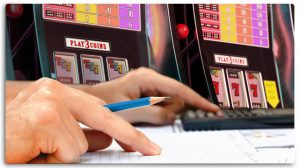
You can then set aside a percentage of this amount (some should be used for savings) for a slots bankroll.
The next step is to think about important variables, such as your spins per hour, average bet, and hourly losses. You can either come up with these estimates by tracking them yourself or merely thinking about the proper numbers.
Most slots players spin the reels between 500 and 700 times per hour, depending upon breaks. You likely fall somewhere in this range too.
Your average bet size should be fairly easy to figure out. You probably have a typical wager size, such as $0.25 or $0.50.
Hourly losses can be difficult to determine, because they change based on the volatility and house edge of the games you’re dealing with. But a nice round number to consider is 250 lost bets per hour.
You’ll probably lose around 250 wagers each hour until you’re able to hit some big payouts. If you’re wagering $0.50 per spin, this equals $125 in losses per hour.
The final step is to run the variables and figure out how long your bankroll should last. The goal is to get an idea on if you should bring more money or make smaller bets to extend your entertainment.
Here’s an example:
- You have a $1,000 bankroll
- Your average bet size is $0.25
- 1,000 / 0.25 = 4,000 total bets
- You lose 250 bets an hour
- 4,000 / 250 = 16
- Your bankroll will theoretically last for 16 hours
Slot machines are so unpredictable that it’s tough to determine if your bankroll will last X amount of hours, even with in-depth calculations.
But you can at least get a nice estimate on how long your bankroll will hold up. Of course, you could also win some huge payouts and be up big at the end of your session.
Play some online slots on your vegas trip
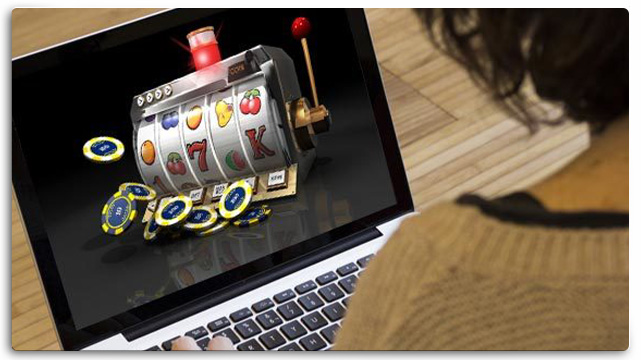
You’re probably heavily into the land-based casino experience if you want to play slots on the vegas strip. But you might try mixing up your play with online slots during the excursion.
Internet slots pay far better than those on the vegas strip or in any other land-based casino destination. The average online slot offers around 95% or 96% RTP, which is unrivaled in most brick-and-mortar casino hubs.
The aforementioned boulder strip is about the only place that compares to internet slots RTP. Even then, you have to bet at least a nickel per line to play games with 95% payback.
Again, you probably aren’t going to the vegas strip to sit in your hotel room and play online slots. But you might consider lounging around the hotel, a bar, or elsewhere and spinning the cyber reels for a little bit to preserve your bankroll.
Conclusion
It would be great if you could enjoy the amenities of a mandalay bay or wynn and have a great change to beat slot machines. Unfortunately, you can’t because vegas strip casinos don’t offer great slots RTP.
Multi-denomination games led the way with 93.61% payback in 2018. But this figure is nothing to get excited about in the overall scheme of things.
Penny slot machines paid just 88.30% RTP on average last year. You’d therefore be facing an 11.70% house edge with the average penny slot, which is horrible.
You’ll get an okay deal with dollar slots (92.30% RTP). Then again, betting $1 per spin and still facing low payback isn’t anybody’s vision of gambling bliss.
The truth is that you should head elsewhere in vegas, such as boulder highway, if you want the best chance to win. The boulder strip offered over 95% RTP for all of its denominations, except penny games, in 2018.
You can also play online slots on the side during your trip enjoy the best payout percentages of all. Of course, the key drawback here is that internet slots don’t offer the same experience as land-based casinos.
Overall, you can’t go into a vegas strip casino expecting to beat the slot machines. They just don’t pay enough to give you a strong chance of winning.
What you can do, though, is combine proper bankroll management with reasonable expectations. Performing bankroll calculations helps you go into each slots session with a realistic mindset. This process also keeps you from betting money that you can’t afford to lose.
Best slot machines by payout percentage
Sick of playing slot machines with rubbish payouts? Join the club!
To solve that exact problem we’ve put together a list of the best slots by payout percentage so you know that the machines your playing are the best they can possibly be.
Top 12 online slots by RTP
Click ‘play now’ buttons to visit an online casino offering the game:












Top 50 slots by payouts
Click name of slot machine to visit a casino offering the game:
| Slot machine | software | RTP% | ||||||||||||||||||||||||||||||||||||||||||||||||
|---|---|---|---|---|---|---|---|---|---|---|---|---|---|---|---|---|---|---|---|---|---|---|---|---|---|---|---|---|---|---|---|---|---|---|---|---|---|---|---|---|---|---|---|---|---|---|---|---|---|---|
| monopoly big event | barcrest |
| Slot machine | software | RTP% | |||||||||||||||||||||||||||||||||||||||||||
|---|---|---|---|---|---|---|---|---|---|---|---|---|---|---|---|---|---|---|---|---|---|---|---|---|---|---|---|---|---|---|---|---|---|---|---|---|---|---|---|---|---|---|---|---|---|
| monopoly big event | barcrest |
| Combination | pays | probability | return |
| three lions | 2500 | 0.001% | 0.025 |
| three tigers | 1000 | 0.015% | 0.15 |
| three jaguars | 400 | 0.05% | 0.2 |
| three leopards | 50 | 0.5% | 0.25 |
| three cheetahs | 5 | 7% | 0.35 |
| total | 3955 | 7.566% | 0.975 |
The slot machine above would return 97.5% to players in the long run. However, we rarely know the odds of slot machines. We do know the paytable - how much each winning combination pays to players - but we have no idea of the probability of getting that winning combination.
To calculate the probability of a winning combination, we need to know is how many stops there are for each symbol. For example, in the machine above there could be 45 stops and one of them would be a lion symbol. By calculating (1/45)*(1/45)*(1/45) we get 0.001%, or the probability of hitting three lion symbols in a row.
In real world, those symbols would have been weighed differently so that they're more likely to come on the first two reels and much less likely to come on the last reel, resulting in a near-miss situation.
I advise you not to play at all because slot machine odds are never good, but if you're going to play anyway, here's how you can find the slot machines that likely have better odds than others.
Why we lose at slots
We lose at slot machines because they're set to give back less than they take on average. It's impossible to play slot machines better; you can just press spin and hope for the best. With that said, though, you can improve your odds of winning at slot machines greatly by making good decisions before playing and having a good strategy when entering a casino - more about that lower on this page.
Generally, the more decisions you can make in a casino game, the lower the house edge is (with optimal play). Since there's almost no room for decisions when playing slots machines - again, your only decision is to press spin - the house edge is high at slots when compared to other popular casino games. And since you play slot machines for real money so fast (400-800 spins an hour), you lose more at slots than at any other casino game. (read how slots work to understand them better.)
Like most casino games, a slot machine is a game of independent trials (the previous game has no influence on the next game). Your chances of winning with each spin are the same regardless of whether you've lost or won. So, there's absolutely no room for in-play slot machine strategy.
How much do slot machines pay back?
A slot machine's payback percentage could be anywhere from 75% to almost 100%, but of course, always lower than 100% (otherwise, the casino would make no profit). You can calculate a casino game's house edge by subtracting its payback percentage from 100% - this is how much the casino makes per bet in the long run. For example, with a 5% house edge, casinos make $5 per every $100 bet.
Calculating a slot machine's payback percentage is easy if you have all the information available: multiply the probability of each outcome with what they pay, and the sum is how much the slot machine returns in the long run, also known as its "payback."
But most of the time we don't have that information. We're in the dark -- sure, casinos can claim certain payback or payout percentages but how do we know they're truthful? Some online casinos get their payouts reviewed by private auditors, but how do we know if the auditors are honest?
It's a different situation with games like blackjack or roulette; in both cases we can calculate the house edge because the rules are known. If you care enough to make the calculations (and you should), you'll know exactly how much you stand to lose or win in the long run.
You could argue that casinos make so much money from slot machines that they have no reason to cheat. I agree, but you can still get a raw deal even if they are honest (setting a low payback percentage is not cheating). I want to have an idea of what kind of a return I get for my money regardless of the honesty of the casino. (see how to pick slot machines to find the best slots to play.)
Not only do casinos keep slot machine players in the dark about payback percentages, they have also weighed slot machine reels differently, resulting in as many near-miss moments as possible, which encourage future play. The first reel is the likeliest to hit something, the second reel is less likely to hit and the third reel is even less likely to hit.
NOTE: some casinos are tested by auditors that publish monthly payout percentages for everyone to see online - now, "payout" is different from "payback." the actual money that the casino has returned to players through their games is "payouts" and the theoretical money that the slot machines are set to return is "payback." payouts can be influenced by huge jackpot wins, for example, in which case a month's payout would look much better than the games have been set to pay back.
How you can win more
Here's the truth: the best thing you can do is to stay far away from slot machines (and stay clear from myths). Losing less is winning more and you can lose the least by never playing slots, even if you knew how to play slot machines the optimal way.

The main consideration is always payback but you should also pay attention to casino comps and other benefits (such as cashback) that come along with playing at casinos.
Why to play slots
Some of you may wonder why to play slot machines at all. Exactly. They're a terrible investment -- think of a machine that you put $1 in and receive $0.95 back. That is basically a slot machine, except for all the sounds and animations, and of course a chance to win a lot of money, perhaps even millions of dollars.
The odds are heavily against you winning that money though. Meanwhile, in the long run, the casino takes your dollar bills and gives you back less. So if you agree to participate in this weird transaction, the least you can do is to find the casinos and slot machines that give you back the most money.
How to find the best casino slots to play
If you're going to play in las vegas or some other popular gambling destination, take a look at this survey. It'll give you a good idea of how the location of the casino affects the general payback percentage of its slot machines; the best las vegas casinos are located mainly in north las vegas, not on the strip. You can use the same logic in other places where there are many casinos around, although if you're "stuck" with only a few, I'm not sure if location makes much of a difference.
After selecting a casino that potentially has a high payback percentage on average, an important part of a good slot machine strategy is to immediately join the casino's slot club (could be called "player's club" as well). Contrary to popular myths, slot club members have the same house edge in their games as other players; the difference is, casinos can track slot club members (you have to insert a club membership card to the slot machine when you play) and it helps them to give you comps when you deserve them (otherwise you may miss-out on them). You'll likely receive something extra just for signing up - free money to play with or a free drink, for example.
Additionally, most casinos give slot club members cashback (0.5% per bet, for example) and that is almost like playing against less house edge, although not literally. You don't win more likely but you receive a portion of your bets back.
Now, look around the casino. I bet you feel the temptation to head over to the flashiest slot machines with the biggest jackpots. That's what most slot players do and it's exactly the opposite of the best way to play slots. Unless your only goal is to win a million dollars (regardless of how unrealistic it is), playing progressive jackpot slots is the worst slot machine strategy you can choose. Many make that mistake and it's no wonder why US casinos get 70% of their revenues from slot machines.
Odds in progressive jackpot slots
The only way you can win a million dollars playing slots is to play slot machines with progressive jackpots, however, you get even worse odds to win than you would get if you played flat-top slots.
The odds of winning a jackpot are usually way better on the first reel of the machine than on the last one. The casino wants to create as many "near-miss" moments as possible -- it is a psychological trick, designed to make the player want to to play more.
It's easy to see why near-misses work: if you're one symbol away from winning a jackpot, it'll leave you with a different feeling than if the jackpot wasn't close at all.
In reality, it only seemed to be close.
In nevada, the regulations state that one stop on the reel can't be weighted more than six times the stops before and after it (many have adopted this rule).
| Symbol | 1st reel | 2nd reel | 3rd reel |
| blank | 2 | 4 | 6 |
| jackpot | 1 | 1 | 1 |
| blank | 2 | 4 | 6 |
Progressive slot machine odds could be weighed like above; the first reel hits a jackpot symbol once out of five times while the third reel only hits once out of 13 times, often resulting in mentioned "near-miss" situations.
But that was a simplified example. Hitting a progressive jackpot usually has more symbols, of course, and way worse odds. The chances of winning the biggest of them all, megabucks, are somewhere in the 1:50,000,000, according to john robinson at casino city times.
Progressive slot machine odds are worse than flat-top machines (the ones without a progressive jackpot) -- this is because a part of the bet goes to the jackpot while the casino takes its own cut. Unless the size of the jackpot is huge - in which case playing jackpot slots could be worth it - it always makes sense to choose a simple fixed jackpot slot machine.
So which slot machine types are best for you?
The simplest slot machines, also known as "straight" or "flat-top" slots, are your best choice financially. No, you can't win a million dollars playing those machines, and yes, they're less flashy than other slots, but they're the best slot games to play at a casino. For every dollar you bet, you may have to lose 10 cents more to flashier machines with progressive jackpots - that's a huge difference in the long run.
So now that you've chosen a simple machine, let's think about your betting strategy for slot machines (I'm not referring to progression betting systems; they don't work):
- Choose the highest denomination. The higher the denomination, the lower the house edge. For example, nickel slots have a higher house edge than dollar slots.
- Bet the maximum amount of coins. There's usually an incentive to bet maximum coins. For example, the jackpot becomes bigger relative to the bet, giving you a better return from the machine (odds stay the same but payout increases relatively more than bet size).
- Bet slowly. Not because pressing the spin button fast or slow would impact your odds of winning at slot machines, but because it's a viable slot machine strategy because you have more time to play with your money and the longer you stay at a casino, the more comps you'll probably receive.
So, let's see, what we have: the most popular myth in the casino game is that managers can change the RTP (return to player) anytime they like. That’s now how it works, and here’s why. At how do casino slots payout
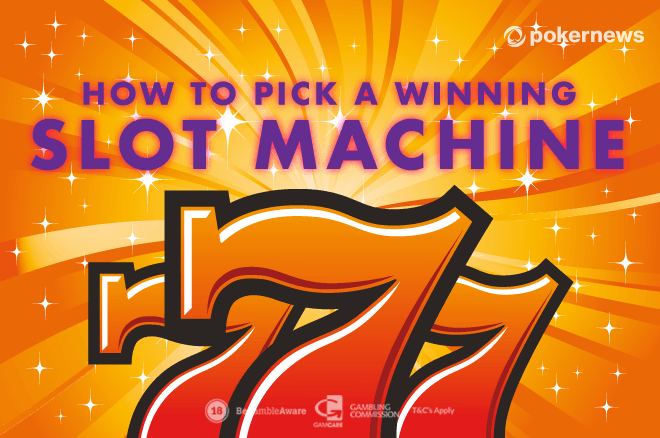



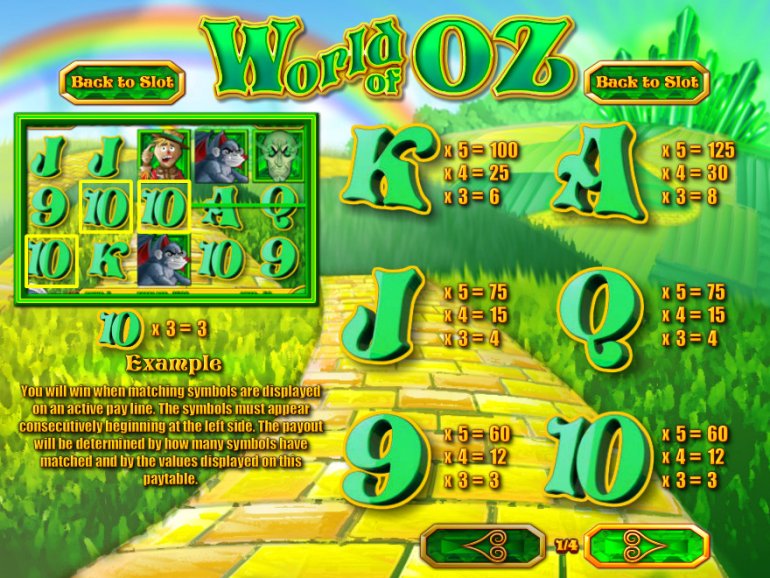






No comments:
Post a Comment